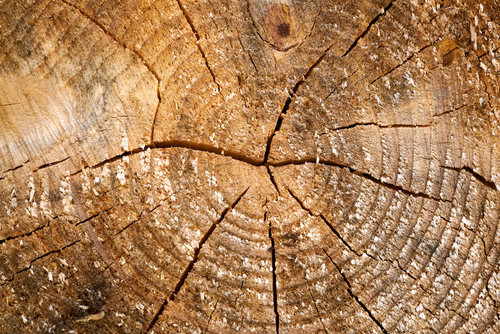What Is Cribbing? A Comprehensive Look
Cribbing is a temporary work structure commonly used in construction. It is used to support aerial lifts and other heavy equipment. Wood is often used for cribbing, since it provides strength and durability. Yet, how cribbing is built plays an important role in its effectiveness.
Aerial lift operators can use cribbing to maintain a level surface. They must use proper cribbing techniques. Failure to do so can result in aerial lift tip-overs. It can also lead to equipment damage and workplace accidents, injuries, and fatalities.
Now, let’s review key topics surrounding cribbing.
Aerial Lift Cribbing Do’s and Don’ts
Your workers may have many questions about what is cribbing. And when it comes to aerial lift cribbing, there are many do’s and don’ts to consider. These include:
Do’s
- Wear work gloves, a helmet, and other personal protective equipment (PPE) when working with cribbing.
- Select cribbing that is free of damage.
- Distribute an aerial lift’s weight on cribbing.
Don’ts
- Place cribbing on an unstable surface.
- Use an aerial lift on cribbing in heavy winds and other severe weather conditions.
- Utilize damaged or flawed cribbing materials.
Wood Cribbing Tips for Aerial Lift Operators
Here are tips for safe use of wood cribbing with aerial lifts.
Choose the Right Type of Wood
Plywood often represents a great option for cribbing. It is a thick, sturdy wood that is capable of handling heavy loads. In addition, plywood cribbing delivers exceptional stability.
Along with plywood, Douglas Fir and Southern Pine are frequently used in wood cribbing blocks. Cribbing from these wood varieties has been shown to handle large loads without wearing down.
Place Cribbing on Stable Ground
Cribbing should only be used on level ground. Verify no debris is underneath or blocking the cribbing.
Calculate the Block Size
Divide an aerial lift’s maximum lifting capacity in tons by five. This will provide the correct block size for wood cribbing.
Cribbing Construction FAQs
1. Should You Use Wood for Cribbing?
Wood typically provides the best option for cribbing. However, plastic and steel can also be used for cribbing.
Regardless of the cribbing material, it is paramount to ensure it can support an aerial lift’s weight. Before selecting cribbing, find out the weight of a lift. This information can be used to refine your search for appropriate cribbing.
2. Can Wood Cribbing Break?
Wood cribbing will show signs of wear and tear if it cannot support an aerial lift’s weight. In this instance, cribbing will start to crush. Cribbing may also make a “groaning” noise as more weight is placed on it.
Aerial lift operators should keep an eye out for warning signs that wood cribbing is breaking. They should inspect their cribbing regularly. If cribbing raises any red flags, it should be repaired or replaced immediately.
3. How often should I replace cribbing?
Aerial lift operators should keep an eye out for warning signs that wood cribbing is breaking. They should inspect their cribbing regularly. If cribbing raises any red flags, it should be repaired or replaced immediately.
4. Can cribbing be set up on gravel, sand, and other unstable surfaces?
Cribbing can be set up on any surface. But, using cribbing on an unstable surface increases an aerial lift operator’s risk of a tip-over. As such, it is always a good idea to inspect a surface for cribbing. If a surface is level, an operator can then use proper cribbing techniques that ensures he or she can use their machine safely.
5. Can cribbing be set up on a slope?
Cribbing should never be set up on a slope greater than 6° (10%). Doing so increases the risk of an aerial lift tip-over.
6. Is it safe to drive an aerial lift on cribbing if the machine’s platform is raised?
No. An aerial lift operator risks a tip-over if he or she drives an aerial lift on cribbing when the machine’s platform is elevated.
7. What is the maximum wind speed in which an operator can use aerial lift cribbing?
When using cribbing, an aerial lift operator should not raise their machine’s platform if wind speeds reach 15 mph or higher. At these times, the wind can create hazardous work conditions. If the operator is not careful, a wind-related accident can occur.
8. Do I need to teach my workers what is cribbing?
Aerial lift certification training provides a great opportunity to educate workers about cribbing construction. The training offers insights into safe and effective cribbing techniques. It ensures aerial lift operators can utilize cribbing in conjunction with OSHA requirements. Aerial lift certification training can help workers avoid cribbing-related accidents as well.
9. Will I be penalized if I do not educate my workers about proper cribbing techniques?
Yes. Businesses can receive OSHA fines if they employ unlicensed aerial lift operators. They also face a greater risk of aerial lift accidents than other businesses.
10. How long will it take to teach my workers about cribbing construction and similar topics?
It may only take a few minutes to educate your workers about cribbing safety topics. You can teach your workers about these topics as part of an online aerial lift certification training program. And this entire program can be finished in about one hour.
Educate Your Workers About Cribbing Safety
Safety training is paramount for aerial lift operators to use cribbing without putting themselves or others in danger. With the right aerial lift certification training program, you can educate your entire workforce about cribbing safety.
CertifyMeOnline.net offers an OSHA-compliant aerial lift safety training program to help workers avoid accidents and injuries. Our training program is fast, simple, and affordable. Plus, it is backed by our team of aerial lift safety experts. To learn more about our training program, please contact us online or call us today at (602) 277-0615.

